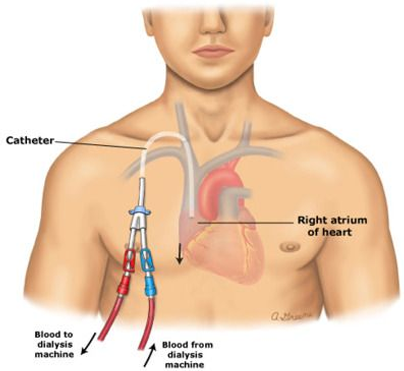
Vascular access is a critical component for patients undergoing renal replacement therapies such as hemodialysis or hemofiltration. It provides a means to draw blood from the body, process it, and return it. There are several types of vascular access methods, including the use of a Permcath (permanent catheter), which is commonly used for both short-term and long-term dialysis.
Steps in Permcath Placement
- Review of medical history and imaging to determine the best vein for access.
- Ensuring the patient is a candidate for catheter placement.
- Sterilizing the insertion site.
- Administering local anesthesia or sedation.
- Ultrasound-guided vein puncture to minimize complications.
- Insertion of a guidewire and dilators to create a track.
- Placement of the catheter using a tunneling technique, which helps reduce the risk of infection.
- Securing the catheter and confirming placement with fluoroscopy or X-ray.
Regular flushing and dressing changes to prevent blockages and infections.
Advantages of Permcath
- Immediate usability for hemodialysis or infusion.
- Suitable for patients awaiting permanent vascular access like an AV fistula or graft.
- Lower infection rates compared to non-tunneled catheters.
